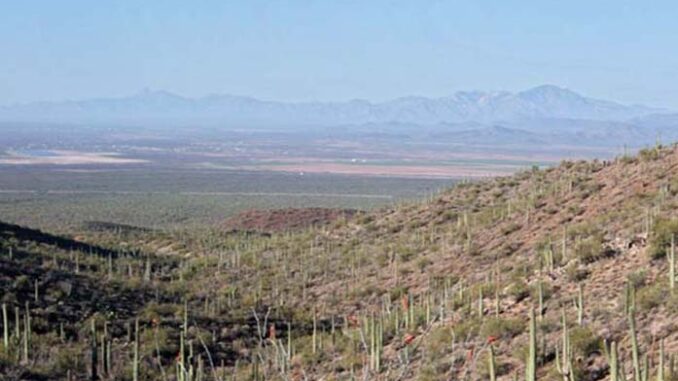
I go to many sources for news these days, avoiding TV’s “if it bleeds it leads” momentary sensationalism. One of those is the online Tucson Sentinel, where a eulogy to the late real estate multi-millionaire Don Diamond appeared, written by Blake Morlock. It begins:
“Donald Diamond is dead and an era is over.
“Actually, the era ended 20 years ago. Diamond both lorded over that period and helped put a stop to it.
“I’m talking about the growth wars that dominated Pima County politics for three decades. Plenty of people played a central role in creating peace. I’m talking about local environmental leader Carolyn Campbell, the late deputy county administrator Maeveen Beehan as well as supervisors like Ray Carroll, Raul Grijalva, Sharon Bronson and Mike Boyd. Pima County Administrator Chuck Huckelberry was vital. There was a whole steering committee that met regularly at 8 a.m. Saturday out at the Arizona Sonora Desert Museum to prove their commitment.” (Emphasis added.)
To the Sentinel’s credit they did also publish my comment, the only one, and Mr. Morlock has not made any response. I think that response is worth reprinting in ADI so that it reaches a larger audience:
I never met Mr. Diamond, but I did work on election campaigns both for and against his candidates. I could never match his prodigious donations to candidates, nor fundraise tens of thousands of dollars as he did to save Sharon Bronson’s seat on the Board of Supervisors in the last election. He lived to a good age, one that with my afflictions I am not likely to see, and I have no intention of speaking ill of the dead.
But I am wondering about Blake Morlock’s “whole steering committee” that met regularly at the Desert Museum on Saturday mornings. That a collection of elected officials and not-elected staff and businessmen outsiders met and presumably discussed and shaped Pima County affairs strikes me as not quite proper, certainly not transparent.
Not knowing what was discussed, or what decisions were made there, I can’t comment on whether this was a huge breach of voters’ trust, cronyism at its most blatant. Were deals cut at the taxpayers’ expense and without their knowledge? We’ll probably never know.
I do know that Diamond Ventures has sold a lot of land to Pima County, and I have not had any response to my Records Request to the county for the amount of taxpayer dollars spent over the last ten years to purchase Diamond Ventures properties. Perhaps Mr. Morlock might have better luck finding out and reporting the facts.
And I do know that the County Administrator, whose Interstate 11 plan through the Avra Valley in violation of his employers’ explicit policy (BOS Resolution 2007-343, recently reaffirmed by Chairman Elias and Supervisor Bronson) is ADOT’s “recommended alternative” and includes the “Sonoran Corridor” linking I-10 and I-19. A new I-11 will cost billions of taxpayer dollars more than improving I-10, and will ruin the communities and wildlife habitat of the Avra Valley, as well as threaten Tucson’s water by dumping emissions on the CAP settling ponds.
The “Sonoran Corridor,” which might be justified as a straight east-west road but instead drops south to provide a free access “auxiliary interstate” to the planned 3200-acre Diamond Ventures Swan Southlands/Verano development, makes one wonder just what kind of deals were struck at those Desert Museum “steering committee” meetings, and since?
The public has a right to know. The media has a responsibility to dig out the facts and report them. Journalism 101.
